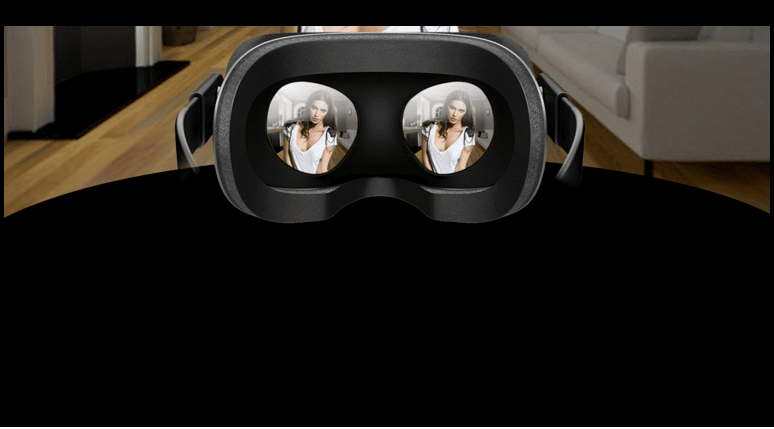Virtual reality technology
Until a few years ago, virtual reality technology (VR) remained largely theoretical, although its application in gaming was a growing focus. However, recent advances have made virtual reality accessible and usable by more people. Omnidirectional treadmills, for example, allow people to move freely in VR environments. There are also new VR accessories, such as smelling devices. The Vaqso attachment, for example, emits a scent depending on the action on the screen. VR Developers use a variety of software, such as VR software development kits, visualization software, game engines, social platforms and training simulators to create VR applications.

The virtual world is growing.
Many clinical applications of VR are currently being developed, with significant interest in both hardware and software components. Therefore, it is not surprising that the number of medical applications for VR is growing. In fact, VR is now among the top 10 applications in rehabilitation and clinical neurology, a field that has experienced exponential growth over the past five years. In addition, research on VR has shifted from a niche market to a broad range of disciplines, from computer science to clinical psychology.
VR is also changing the way students learn. Using tools from VR, students can visualize difficult concepts. In addition, VR simulators are now being used in education and can even help train fighter pilots, surgeons, athletes and even drivers. Virtual reality is also making inroads into the entertainment industry as 3D movies and 360° views become more accessible and realistic.
Researchers are using VR to treat post-traumatic stress disorder and other mental health issues. VR has also been used to help paraplegics regain control of their limbs. VR Systems can also be used for training and remote collaboration. They can also be used for medical simulations. The technology is also gaining acceptance among scientists and the public. However, more research is needed to confirm the effectiveness of VR as a therapeutic method.
The technology is becoming more affordable. However, despite the numerous advantages of VR, there are also some disadvantages. Some people suffer from severe headaches, dizziness, muscle soreness and visual disturbances after using it. These disadvantages arise from the physical components of the experience of VR and the way our brains perceive virtual reality. However, as the technology of VR improves, these effects occur less and less frequently.
More about the virtual Environment.
The VR literature is a dynamic and evolving field, with more and more basic research and applications being published. Researchers who make fundamental contributions to the field are more likely to be influential and impact the development of the field. The authors listed below have made fundamental contributions to the field. Their work has helped advance VR beyond its technological and social benefits. While this list is not exhaustive, it provides a broad overview of authors working in the field.
The first prototype of virtual reality was developed in 1968 by American computer scientist Ivan Sutherland. This prototype was named “Sword of Damocles” and produced realistic images. However, it was clunky and heavy and represented a primitive version of today’s technology. However, the idea of VR and AR gained momentum in the early 1980s with military applications. The movies Tron and The Matrix also predicted the future of VR technology.
Advantages of a virtual reality headset
Virtual reality headsets are head-mounted devices that give the user the impression of being in a new world. These devices are commonly used in video games and simulators. They can also be used to train for a specific sport or activity. These devices can be used to create a realistic experience for a particular sport or activity.
A VR headset consists of two screens and sensors that detect the field of view. It compensates for head movements and provides a realistic simulation of the environment. These headsets can display simple games or fully immersive 3D worlds. The headsets can also include data gloves or force feedback devices to simulate interactions with digital objects.
One of the most popular VR headsets is the Oculus Rift. It costs $599 (PS549) and includes a built-in camera, haptic feedback system and remote control. It is ideal for early adopters and those looking for the best VR experience. This VR system has a vibrant developer community and the financial support of Facebook.
Aside from helping people with disabilities, VR applications are also used in the medical field. They can help with PTSD and help patients regain motor and cognitive function. VR Headsets can also help train doctors to perform difficult surgical procedures. These headsets provide simulated environments where surgeons can practice their techniques without endangering the lives of their patients.
Another advantage of virtual reality headsets is that they are more comfortable. Some models feature adjustable straps and pads to ensure a comfortable fit. Others have ventilation systems that prevent the lenses from fogging up. High-quality headsets also have head tracking that makes the virtual experience seem more real. They may also have additional features. You may want to buy a VR headset with controllers that can track your entire body.
The system usually consists of a VR headset, a display, sensors and an input device. The headset is worn over your head and displays a 3D image or video. The system’s sensors track your head movements and allow you to interact with the virtual environment. You can also use the input device to select content from the VR system.
Aside from that, there are several other uses for VR headsets. Some companies use them to train employees to perform certain tasks more efficiently. The headsets can also be used for recreational purposes. You can watch movies, listen to music, and even take a virtual vacation with these devices. In addition, VR headsets can also be used to play video games with friends.
Before you buy a Virtual Reality headset, you should pay attention to the display and audio quality. A higher resolution screen can provide a better view of the virtual world and reduce the risk of motion sickness. Some VR headsets even have built-in speakers, so there is no need to buy additional audio equipment.


